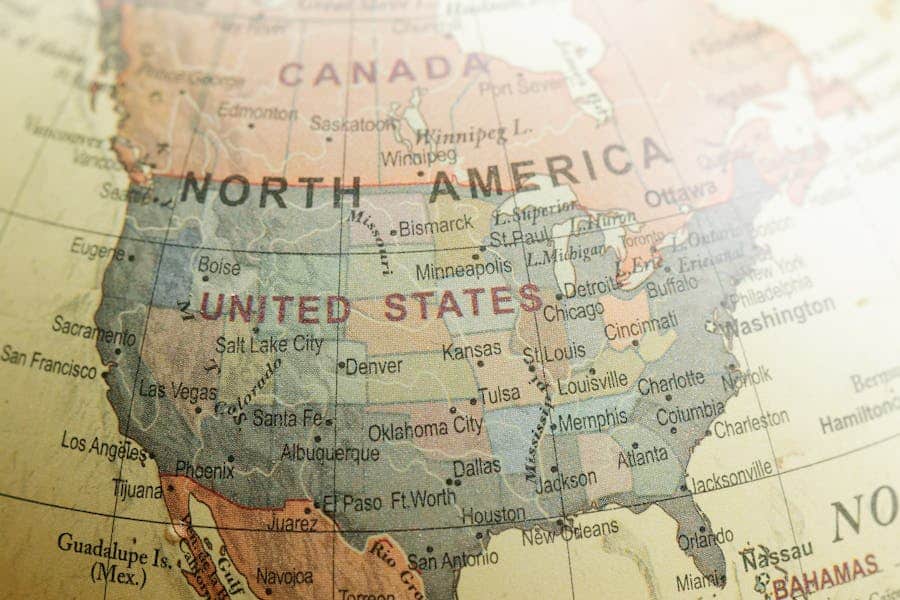
The quest to determine the exact center of North America has intrigued geographers, historians, and travelers alike. This geographical enigma is more than just a point on the map; it represents a blend of historical narratives, cultural significance, and scientific calculations. While various claims and methods exist to identify this spot, the most recognized locations include Rugby, North Dakota, and Center, North Dakota. This article delves into the fascinating journey of discovering the center of North America, exploring different methodologies, the reasons behind varying claims, and the broader implications of pinpointing such a location.
Where is the center of North America?
The center of North America is a contested point with several claims. The most recognized locations are Rugby, North Dakota, which has a monument declaring it the geographic center, and Center, North Dakota, based on more recent calculations. Each location has its own historical and cultural significance, contributing to the ongoing debate and fascination surrounding the true center of the continent.
Historical Claims And Cultural Significance
The center of North America has been debated for over a century, with various locations staking a claim. In 1931, the U.S. Geological Survey designated Rugby, North Dakota, as the geographic center. A monument was erected to mark this spot, and the town embraced this identity, attracting tourists and boosting local pride. However, as mapping technology advanced, other locations emerged as contenders. Center, North Dakota, for instance, claims to be the true center based on more precise calculations. This ongoing debate highlights the interplay between geography, community identity, and local history.
For the towns claiming to be the center of North America, the designation is more than a geographical fact; it is a source of cultural pride and identity. With its monument and museum, Rugby, North Dakota, celebrates its status with annual events and educational programs. The town’s identity is intertwined with this claim, influencing local culture and tourism. Similarly, Center, North Dakota, leverages its claim to attract visitors and foster community pride. These cultural narratives enrich the debate and add depth to the significance of determining the continent’s center.
Various methods have been employed to pinpoint the center of North America. Traditional methods involved balancing a cut-out map of the continent on a pin to find the center of mass. More modern techniques use geographic information systems (GIS) and digital mapping tools for greater accuracy. Each method has its limitations and advantages, contributing to different results and ongoing discussions. The evolution of these techniques reflects broader advancements in geography and technology, illustrating the dynamic nature of this quest.
With the advent of digital mapping and satellite technology, the quest to find the center of North America has evolved. Recent GIS technology calculations have suggested that the true center might be closer to Center, North Dakota. This shift underscores the impact of technological advancements on geographic studies and the importance of precision in modern cartography. The evolving claims also reflect changes in our understanding of geography and the tools we use to explore it.
The claims to the center of North America play a significant role in local tourism and community identity. Towns like Rugby and Center have leveraged their geographical claims to boost tourism, creating monuments, museums, and events that draw visitors. This tourism impact highlights such claims’ economic and social benefits, demonstrating how geography can influence community development and cultural heritage. The interplay between geography and community underscores the multifaceted nature of determining the center of a continent.
Geographical And Scientific Perspectives
Geographical Significance of North America’s Center: The center of North America holds considerable geographical significance, representing a balance point of the continent’s landmass. Determining this center involves complex calculations that consider the land’s irregular shape and varying topography. The process reflects broader themes in geography, such as spatial analysis and the importance of accurate mapping.
Scientific Methods to Identify the Center: Several scientific methods have been used to identify the center of North America. Traditional methods include balancing physical maps, while modern techniques use advanced digital mapping tools. These methods highlight the evolution of geographical science and the increasing precision with which we can measure and analyze spatial data.
Technological Advances in Mapping: Technological advances in mapping, such as GIS and satellite imagery, have transformed our ability to determine geographic centers. These tools allow for more accurate calculations and have led to new claims about the center of North America. The role of technology in geography underscores the dynamic and evolving nature of the field.
Rugby, ND: Historical Claims: Rugby, North Dakota, has a long-standing claim to being the center of North America. The U.S. Geological Survey recognized this designation in the 1930s, and it has become a significant part of the town’s identity. Rugby’s historical context and cultural significance highlight the intersection of geography and community heritage.
Center, ND: Modern Calculations: Recent calculations suggest that Center, North Dakota, maybe the true center of North America. Based on more precise mapping techniques, these findings challenge Rugby’s historical claim. The debate between Rugby and Center reflects broader themes in geography, such as the role of technological advancements in reshaping our understanding of the world.
Challenges And Controversies
Determining the True Center
Finding the true center of North America is fraught with challenges. The continent’s irregular shape and diverse topography complicate calculations. Different methodologies yield varying results, leading to multiple claims and ongoing debates. These challenges highlight the complexity of geographic studies and the importance of precision and consistency in scientific research.
Historical vs. Modern Claims
The debate between historical and modern claims to the center reflects broader geographical tensions. Traditional methods, like those used in Rugby, are often challenged by more recent, technologically advanced calculations. This tension underscores the evolving nature of geographic science and the ongoing quest for accuracy.
Community Reactions and Impacts
Community reactions to claims of being the center are varied. While some towns embrace and leverage their designation for tourism and cultural pride, others may face challenges in balancing development and preservation. The impact on local communities highlights geographic claims’ social and economic dimensions.
Legal and Political Implications
Geographic claims to the center can have legal and political implications. Disputes over land use, development rights, and tourism promotion can arise. These implications demonstrate the broader influence of geographic designations on policy and governance.
Balancing Tourism and Preservation
Balancing tourism and preservation is a key challenge for towns claiming the center of North America. While tourism can boost local economies, it must be managed sustainably to preserve cultural heritage and environmental integrity. This balance is crucial for the long-term success and sustainability of these claims.
Conclusion
Determining the center of North America is an intriguing blend of geography, history, and community pride. From historical claims in Rugby to modern calculations favoring the Center, the quest to pinpoint this unique spot reflects the dynamic nature of geographic science. These claims’ cultural and economic impacts highlight the importance of precise measurement, community engagement, and sustainable tourism. As our understanding of geography evolves, so will the debate over the true center of North America.
FAQ’s
Q. Why is the center of North America significant?
A. It represents a balance point of the continent’s landmass and holds cultural, economic, and environmental importance for the claiming communities.
Q. How do communities benefit from claiming the center of North America?
A. Claims to the center can boost local tourism, foster community pride, and enhance cultural heritage, contributing to economic development.
Q. What challenges exist in determining the center of North America?
A. Challenges include the continent’s irregular shape, varying topography, and differing methodologies, which have led to multiple claims and ongoing debates.








